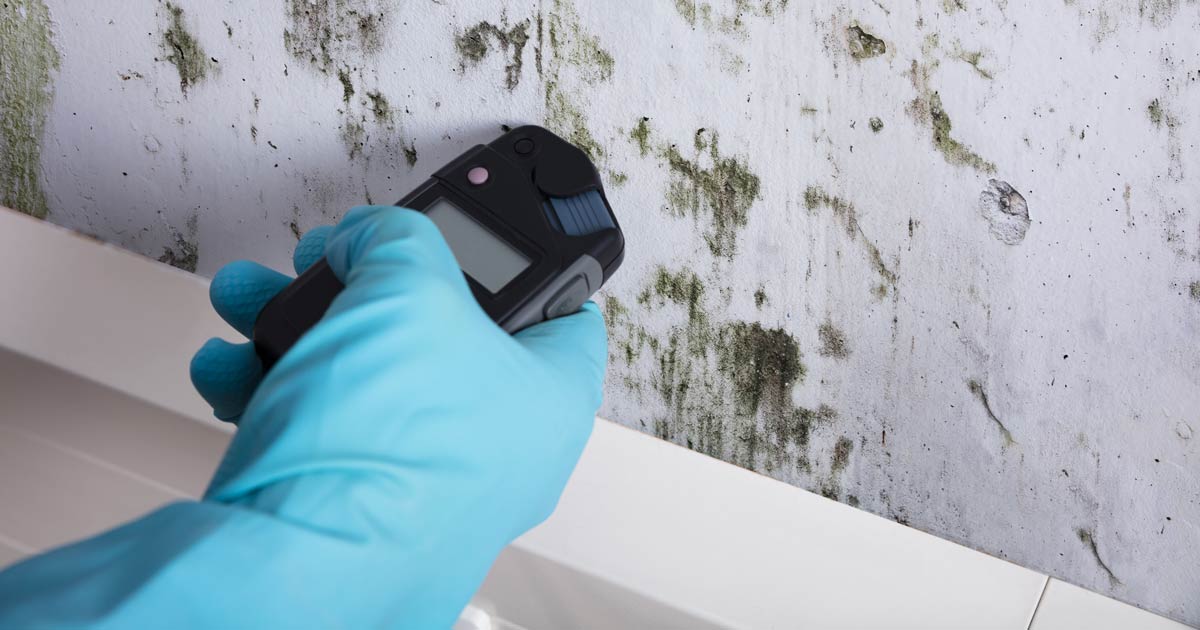Specialist Tips for Message Mold And Mildew Remediation Success
In the realm of mold and mildew remediation, successfully eliminating mold is just half the battle; the true obstacle exists in preventing its reappearance. By sticking to skilled ideas and finest practices, people can safeguard their spaces against mold and mildew rebirth and keep a healthy and balanced indoor environment.
Monitor Humidity Levels Regularly
After finishing mold and mildew remediation treatments, preserving optimum moisture levels is crucial to stop mold and mildew re-growth and make certain a healthy and balanced interior atmosphere. High humidity levels over 60% create a conducive atmosphere for mold and mildew to flourish, making routine checking a proactive procedure to stop any type of future mold concerns.
In addition, developing a regular timetable for moisture checks, especially in risky areas such as kitchens, restrooms, and cellars, is a proactive method to mold and mildew prevention. By continually checking moisture degrees, home owners can successfully minimize the danger of mold and mildew reoccurrence and preserve a healthy indoor atmosphere post-remediation.
Conduct Thorough Inspections Post-Remediation
Adhering to the conclusion of mold and mildew remediation procedures, it is crucial to carry out extensive assessments to verify the effectiveness of the removal process. These post-remediation inspections are important in making sure that the mold and mildew problem has actually been efficiently attended to which there is no reoccurrence or staying mold development. Inspections should be accomplished by certified professionals that have know-how in determining mold and examining interior air high quality.
During these inspections, various approaches such as visual analyses, air sampling, and surface tasting may be employed to thoroughly review the remediated locations. Visual analyses involve a comprehensive inspection of the facilities to look for any noticeable signs of mold and mildew development or water damage. Air sampling assists in determining the airborne mold and mildew spore levels, while surface area sampling can detect mold fragments on surfaces.
Implement Proper Ventilation Methods
After ensuring the effectiveness of the mold removal procedure through detailed inspections, the next vital step is to concentrate on carrying out proper air flow methods. Adequate ventilation is crucial in protecting against mold reoccurrence by regulating moisture degrees and promoting air circulation.
Correct ventilation not just aids in protecting against mold and mildew development yet also adds to the general wellness and comfort of residents. By making certain adequate ventilation throughout the building, you can decrease the threat of mold and mildew regrowth and create a healthier living atmosphere.

Use Mold-Resistant Materials for Fixes
To enhance the long-lasting efficiency of mold remediation efforts, incorporating mold-resistant materials for repair services is essential in mitigating the risk of future mold development. Mold-resistant materials are created to withstand wetness and inhibit mold and mildew growth, making them a crucial selection for locations vulnerable to wetness and moisture. When repairing areas affected by mold and mildew, using products such as mold-resistant drywall, mold-resistant paints, and mold-resistant caulking can help prevent mold reoccurrence.
Mold-resistant drywall is a superb choice to standard drywall in locations like basements and shower rooms where dampness degrees are higher. This type of drywall has a special covering that withstands mold and mildew growth also when subjected to damp problems. Additionally, utilizing mold-resistant paints containing great site antimicrobial agents can additionally hinder mold and mildew development on wall surfaces and ceilings.
In locations where wetness is common, such as shower rooms and cooking areas, making use of mold-resistant caulking around windows, tubs, and sinks can aid seal out water and stop mold and mildew from holding in fractures and holes. By buying these mold-resistant products during repair work post-remediation, you can significantly minimize the probability of future mold and mildew concerns and keep a healthier indoor environment.
Maintain Cleanliness and Address Water Issues
Guaranteeing tidiness and quickly dealing with water issues are essential practices to promote in protecting interior areas from mold reinfestation. After mold removal, it is critical to preserve a tidy atmosphere to avoid the regrowth of visit mold and mildew (Post Remediation Inspection near me). Normal cleansing, dusting, and vacuuming can aid remove any sticking around mold spores and prevent them from resolving and multiplying. In addition, maintaining interior rooms completely dry and resolving any type of water issues quickly is necessary in mold avoidance. Leakages, water invasion, or high humidity degrees can create the best breeding place for mold, so it is important to fix any type of water-related issues quickly.
To maintain tidiness, think about using HEPA filters in vacuum cleaners and air purifiers to trap mold and mildew spores and stop their circulation airborne. Making certain proper ventilation in areas prone to moisture accumulation, such as kitchen areas and restrooms, can aid keep humidity levels in check. By remaining alert concerning cleanliness and resolving water issues quickly, you can properly avoid mold and mildew reinfestation and maintain a healthy indoor atmosphere.
Conclusion

In the world of mold removal, efficiently eliminating mold is just half the battle; the real obstacle lies in stopping its reappearance. After finishing mold remediation treatments, maintaining ideal humidity degrees is crucial to stop mold and read the article mildew re-growth and guarantee a healthy and balanced interior setting. High moisture degrees above 60% produce a favorable environment for mold and mildew to prosper, making routine checking a proactive procedure to stop any future mold and mildew issues.
To enhance the lasting effectiveness of mold removal efforts, integrating mold-resistant materials for repair services is vital in mitigating the danger of future mold growth. After mold removal, it is crucial to preserve a tidy environment to prevent the regrowth of mold.